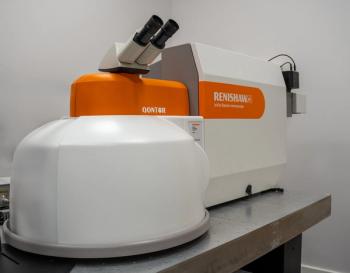Key Takeaways
- Researchers from Tohoku University and partners developed a hybrid system combining near-infrared and terahertz spectroscopy with machine learning to improve plastic recycling accuracy.
- The system accurately identified difficult plastics like transparent PET and black PS using optimized frequencies and XGBoost algorithms tuned via Bayesian methods.
- eXplainable AI (XAI) helped reveal which spectral features were most useful for classifying plastics, enhancing transparency in the model’s decision-making process.
- This method offers a scalable solution for early-stage sorting stations.
A recent study conducted by a team of researchers from Tohoku University, Shibaura Institute of Technology, and Shizuoka University examined how to improve recycling outcomes using various spectroscopy techniques. This study, which was published in the journal Waste Management, presented a novel method that combined near-infrared (NIR) and terahertz (THz) spectroscopy with machine learning (ML) techniques (1). Using these techniques, the researchers demonstrated how they could differentiate between different types of plastic materials.
Molecular spectroscopy has been routinely used to identify different plastic types. Techniques such as Raman spectroscopy can do so because of their ability to read the spectral signals from these plastics (2). In their study, the research team, led by researcher Kazuaki Okubo of Tohoku University, investigated their technique on transparent and black food containers made from polyethylene terephthalate (PET) and polystyrene (PS). These materials often pose challenges for automated sorting systems because of their visual similarities and variability in spectral signatures caused by differences in shape, color, and additives (1).
What Was The Experimental Procedure?
As part of the experimental procedure, the researchers collected 264 plastic samples from municipal waste in Sendai City, Miyagi Prefecture, in March 2022. These samples, which were from transparent, black, and multi-colored food containers and packaging, were obtained from designated plastic waste bags (1). Following local waste disposal guidelines, the containers were cleaned of food residue and non-plastic components. Labels on the containers were used to identify the plastic type, and for unlabeled samples, Fourier-transform infrared (FT-IR) spectroscopy was used to confirm their composition (1).
Then, in an effort to overcome common limitations of traditional techniques, the research team utilized a hybrid spectroscopic system that uses both NIR and THz waves (1). These waves were augmented by an advanced machine learning algorithm, XGBoost, which was optimized through Bayesian tuning (1). This setup achieved a precision score exceeding 90%, indicating highly accurate material classification.
Artificial intelligence (AI) also played a key role in the study. The researchers deployed eXplainable AI (XAI) to interpret the ML model’s decision-making process, which allowed the team to gain insights into which spectral features contributed most to the accurate identification of plastics (1). The results they obtained revealed that THz transmittance at 0.140 THz was particularly effective for identifying transparent PS, whereas a 0.075 THz frequency was critical for distinguishing transparent PET (1). In contrast, NIR spectroscopy was most effective in identifying black PS, which typically poses a challenge for conventional optical methods (1).
What Are The Key Takeaways From This Study?
One of the key takeaways from this study is that the researchers used their technique to confirm that different plastics require different frequencies for optimal identification. As a result, the study highlighted the need for a multi-modal approach that goes beyond conventional NIR-only systems (1).
Another key takeaway from the study is the team’s use of Bayesian optimization to automate the hyperparameter tuning of the XGBoost algorithm. This approach significantly reduces the human effort required to build and train the model (1).
What Is The Impact Of This Study?
The impact of this study is that it proposes and tests a new effective method that can sort plastics accurately. The authors also demonstrate the impact of using automation in their method to produce reliable, quick results.
Another impact of this study is that it lays the groundwork for future research in plastic sorting. This method was designed to be expanded to increase the range of plastic types it can sort, including multi-layered packaging and emerging bioplastics. As a result, according to the research team, future studies can and should evaluate the economic feasibility, installation costs, and environmental impact of integrating this hybrid system into existing sorting facilities (1).
The researchers believe that the system they demonstrated here can be used at early-stage sorting stations to reduce downstream processing costs and improve resource recovery (1). As plastic pollution continues to strain environmental and waste management systems globally, this novel hybrid spectroscopy approach offers a new way to improve recycling operations, making them more sustainable.
References
- Okubo, K.; Manago, G.; Tanabe, T.; et al. Identifying Plastic Materials in Post-Consumer Food Containers and Packaging Waste Using Terahertz Spectroscopy and Machine Learning. Waste Manag. 2025, 196, 32–41. DOI: 10.1016/j.wasman.2025.02.018
- Ocean Optics, Spectroscopy for Plastics Recycling. Ocean Optics. Available at: https://www.oceanoptics.com/blog/spectroscopy-for-plastics-recycling/#:~:text=In%20some%20cases%2C%20Raman%20spectroscopy,techniques%20for%20identifying%20black%20polymers. (accessed 2025-05-21).




